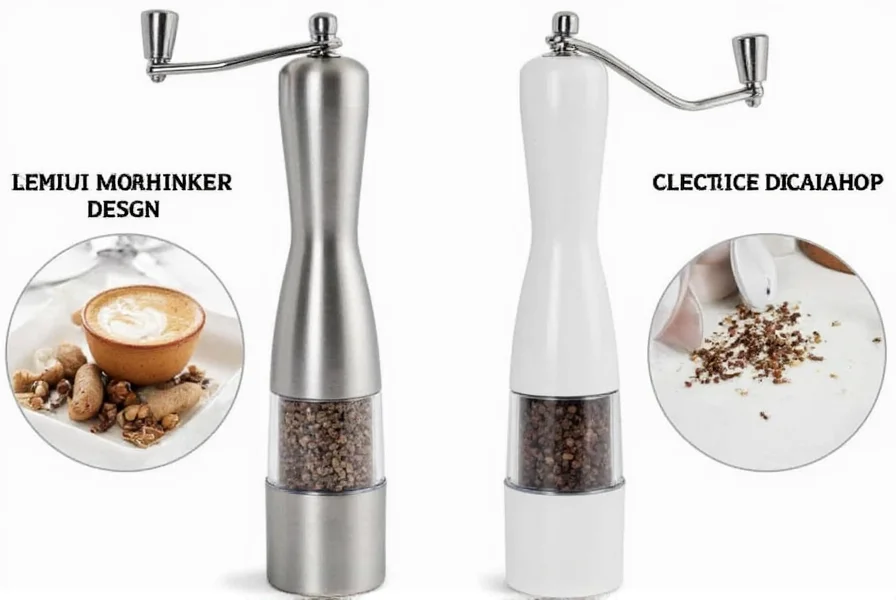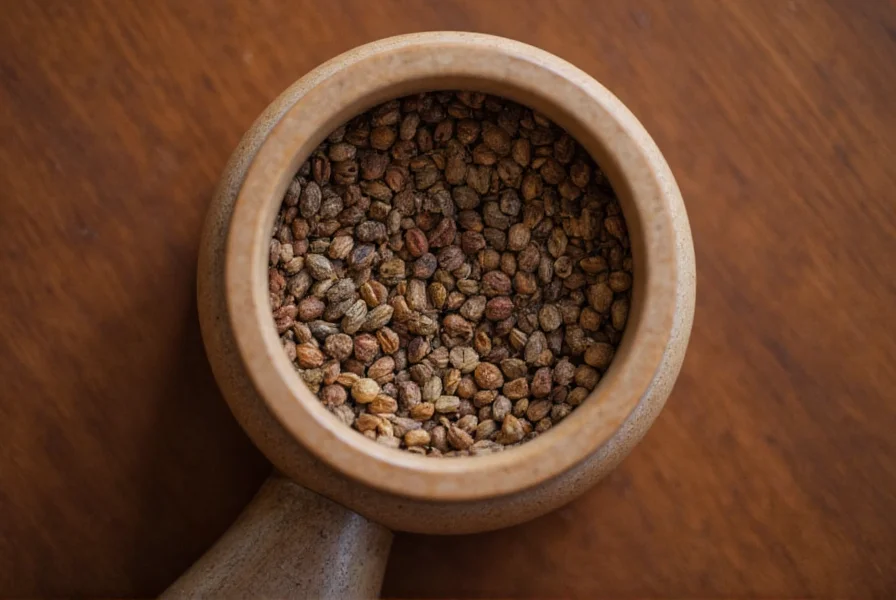The Essential Guide to Pepper Mills: Types, Selection, and Usage
Understanding pepper mills goes beyond simply grinding peppercorns. The right mill significantly impacts flavor, kitchen efficiency, and culinary experience. Freshly ground pepper contains more volatile oils and complex flavors compared to pre-ground alternatives, making the proper mill an essential kitchen tool for home cooks and professional chefs alike.
Pepper Mill Mechanisms: Ceramic vs. Steel
The grinding mechanism represents the heart of any quality pepper mill. Two primary materials dominate the market: ceramic and steel. Each offers distinct advantages depending on your cooking habits and pepper preferences.
| Mechanism Type | Best For | Lifespan | Maintenance Needs |
|---|---|---|---|
| Ceramic | Peppercorns (all varieties), occasional salt | 10+ years with proper care | Minimal; avoid excessive moisture |
| Steel | Dry spices, occasional pepper | 3-5 years before dulling | Regular drying to prevent corrosion |
Ceramic mechanisms maintain sharpness significantly longer than steel when grinding peppercorns specifically. The natural oils in peppercorns accelerate steel corrosion, making ceramic the superior choice for dedicated pepper grinding. Steel mechanisms work better for drier spices but require more careful maintenance when used with pepper.
When selecting the best manual pepper mill for kitchen use, consider how frequently you cook with pepper. Daily users should prioritize ceramic mechanisms for longevity, while occasional users might find steel models sufficient.
Manual vs. Electric Pepper Mills: Making the Right Choice
Choosing between manual and electric models depends on your cooking style, physical ability, and kitchen workflow. Understanding the practical differences helps determine which option serves your needs best.

Manual pepper mills offer greater control over grind size and provide the tactile feedback many chefs prefer. They require no batteries or electricity, making them reliable kitchen staples. The twisting motion allows precise adjustment from fine powder to coarse cracks with subtle pressure changes.
Electric pepper mills excel in accessibility and convenience, particularly for those with limited hand strength or arthritis. With the push of a button, they deliver consistent grinds without manual effort. However, they typically offer fewer grind size options and require battery replacements or recharging.
For most home kitchens, a high-quality manual mill represents the optimal balance of control, durability, and simplicity. Professional kitchens often maintain both types—manual for precision work and electric for high-volume service.
How to Properly Use and Maintain Your Pepper Mill
Proper usage techniques significantly extend your pepper mill's lifespan and ensure consistent performance. Many users unknowingly damage their mills through improper handling and maintenance.
Correct filling procedure: Always remove the top cap and fill the mill no more than three-quarters full with whole peppercorns. Overfilling creates excessive pressure on the grinding mechanism. Use only dry peppercorns—moisture accelerates corrosion in steel mechanisms.
Adjusting grind size: Most quality mills feature a dial or knob at the top or bottom. Turn counter-clockwise for finer grinds and clockwise for coarser results. Make small adjustments between uses to find your preferred consistency. Never force the adjustment mechanism beyond its natural resistance point.
Maintenance essentials: Regularly wipe the exterior with a dry cloth after use. Never submerge the mill in water or place in dishwasher. For stubborn residue, use a soft brush to clean exterior surfaces. If grinding becomes difficult, disassemble according to manufacturer instructions and remove any built-up peppercorn dust.
Following proper pepper mill maintenance tips prevents common issues like clogging and inconsistent grinding. A well-maintained ceramic mechanism can last decades with minimal care.
Pepper Selection and Grinding Techniques
The quality of your peppercorns directly impacts the flavor of your ground pepper. Not all peppercorns perform equally in every mill type, and understanding these differences enhances your culinary results.
Black peppercorns remain the most versatile option, working well in all mill types. Their moderate hardness provides optimal friction against grinding mechanisms without excessive wear. White peppercorns, having had their outer layer removed, produce a milder flavor but can create more dust that may clog mechanisms over time.
When exploring types of peppercorns for grinding, consider these factors:
- Freshness: Whole peppercorns retain flavor significantly longer than pre-ground
- Size consistency: Uniform peppercorns produce more consistent grinds
- Moisture content: Drier peppercorns prevent mechanism corrosion
Store peppercorns in an airtight container away from heat and light. Properly stored, they maintain peak flavor for 1-2 years. Avoid refrigeration, as temperature fluctuations introduce moisture that damages both peppercorns and mill mechanisms.

Common Pepper Mill Misconceptions
Several persistent myths surround pepper mills, often leading to improper usage and premature wear. Understanding these facts helps maximize your mill's performance and longevity.
Myth: Salt and pepper mills are interchangeable Reality: Salt's corrosive properties quickly destroy standard pepper mill mechanisms. Only mills specifically designed for salt (with corrosion-resistant materials) should be used with salt.
Myth: All "freshly ground" pepper offers identical flavor Reality: The grind size dramatically affects flavor release. Fine grinds provide immediate heat but dissipate quickly, while coarse grinds offer gradual flavor release throughout cooking.
Myth: Expensive mills always perform better Reality: Many mid-range mills with quality ceramic mechanisms outperform expensive decorative models with inferior grinding components. Focus on the mechanism quality rather than brand prestige when selecting the best pepper mill for your kitchen.
FAQ
Can I use the same mill for both salt and pepper?
No, you should not use the same mill for both salt and pepper. Salt's corrosive properties will rapidly damage standard pepper mill mechanisms. Only mills specifically designed for salt (with corrosion-resistant ceramic or special coatings) should be used with salt. Using a dedicated pepper mill for salt will significantly shorten its lifespan.
How often should I clean my pepper mill?
Regular cleaning isn't necessary for most pepper mills. Simply wipe the exterior with a dry cloth after use. Only disassemble and clean the interior if grinding becomes difficult or inconsistent, which typically happens after several months of regular use. Over-cleaning can introduce moisture that damages the mechanism.
Why does my pepper mill stop grinding properly?
Most grinding issues occur due to moisture exposure, overfilling, or using damp peppercorns. Peppercorn dust buildup can also cause clogs. For ceramic mechanisms, the problem is rarely a dull grinder (ceramic stays sharp for years) but rather blockages. Steel mechanisms may eventually dull with prolonged use, requiring replacement.
What's the difference between grinding mechanisms in expensive vs. affordable pepper mills?
The primary difference lies in the quality and precision of the grinding mechanism. Higher-end mills feature precisely engineered ceramic mechanisms that maintain consistent grind sizes across their entire adjustment range. Budget models may have less precise adjustments and mechanisms that wear faster or produce inconsistent grinds, especially at finer settings.











 浙公网安备
33010002000092号
浙公网安备
33010002000092号 浙B2-20120091-4
浙B2-20120091-4